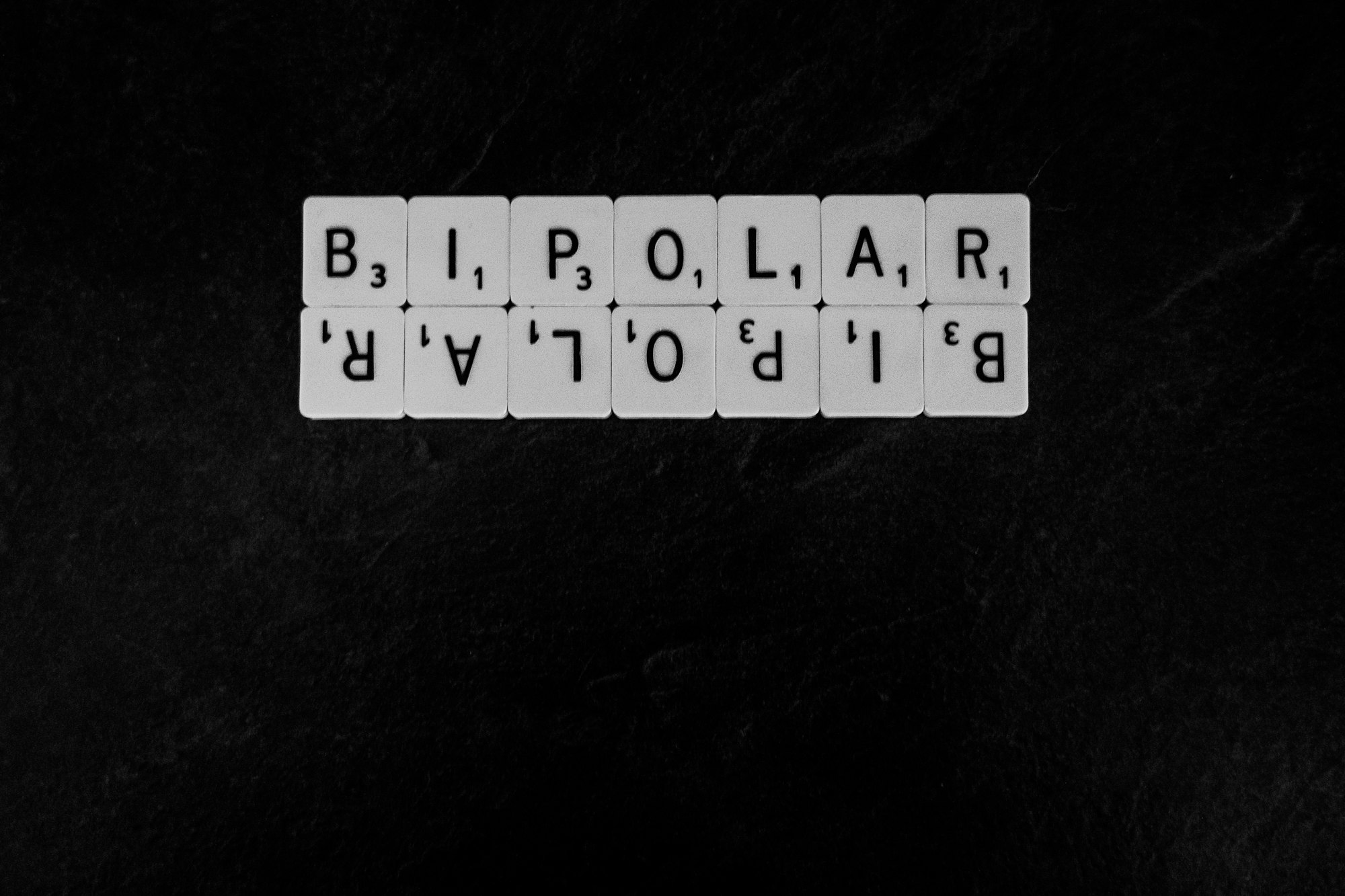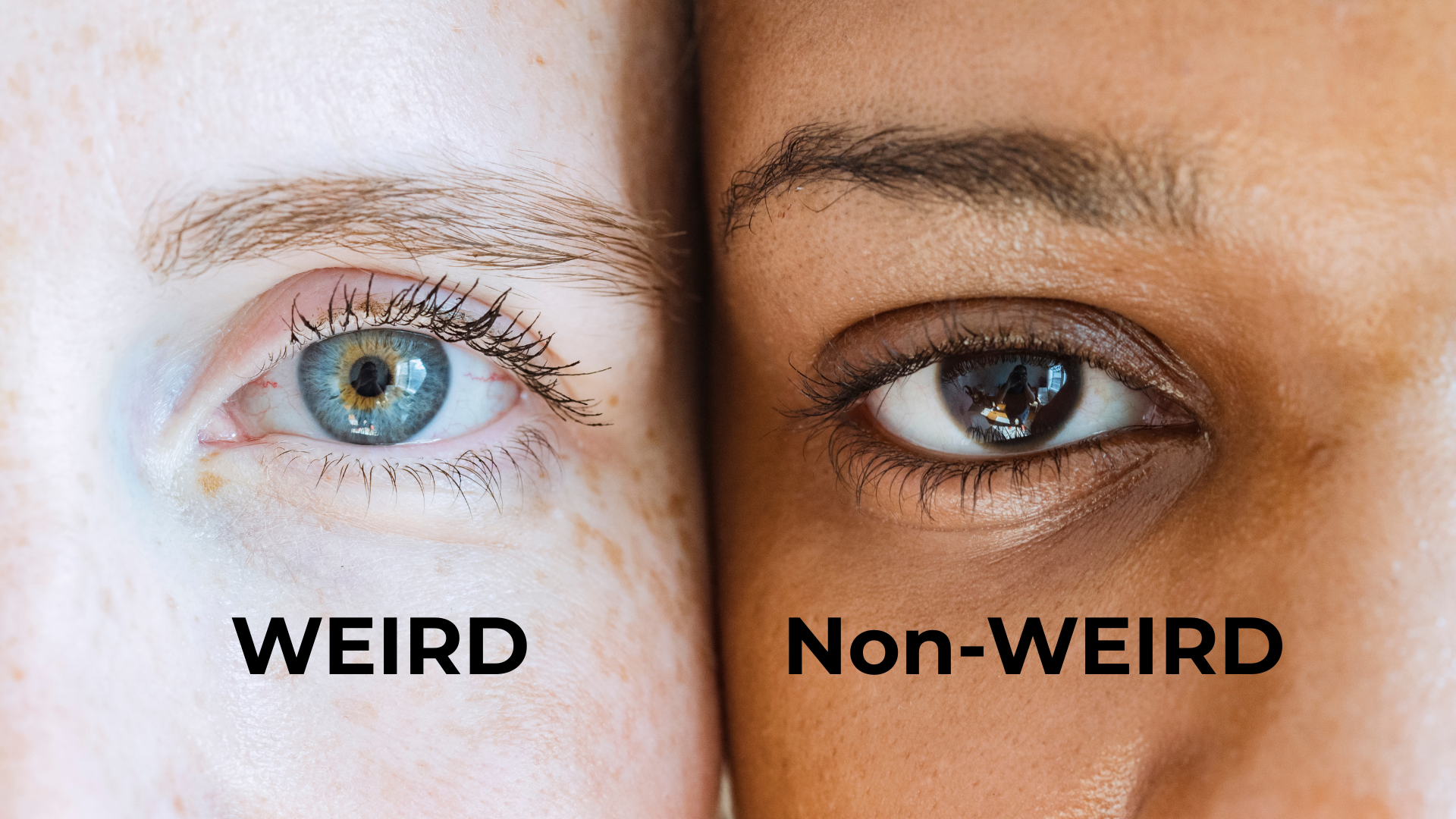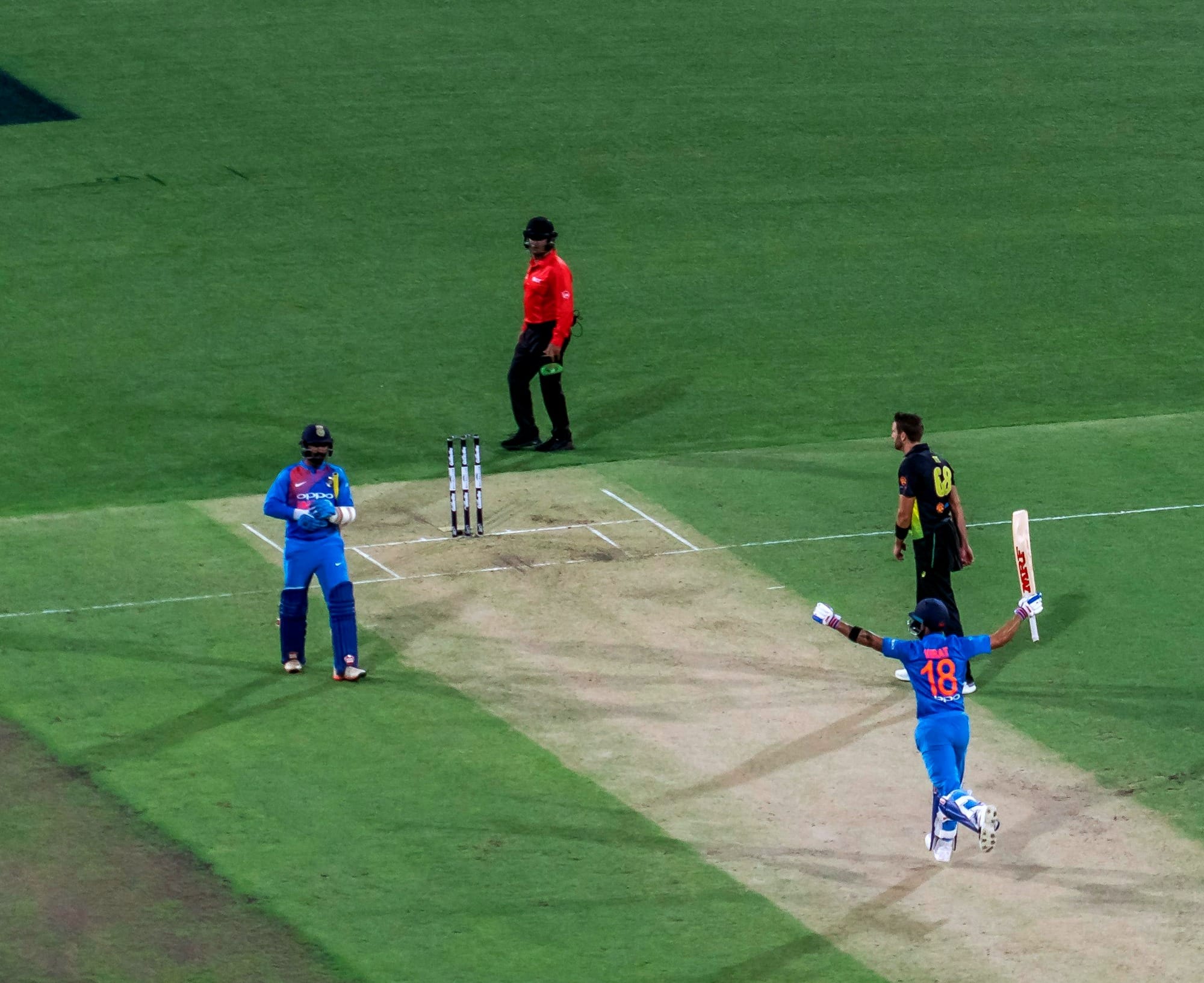Bipolar disorder is a mental health condition that affects millions of people worldwide. It is characterized by episodes of extreme mood swings, ranging from depression to mania. These mood changes can impact a person’s thoughts, feelings, behaviour, and functioning. Bipolar disorder can be challenging to cope with, but it can be managed with proper treatment and support. In this article, I will provide a comprehensive overview of bipolar disorder, including its causes, symptoms, diagnosis, treatment, and management.
What is Bipolar Disorder?
Bipolar disorder, also known as manic-depressive illness, is a type of mood disorder that involves shifts between two opposite states of mood – depression and mania:
- Depression is a low mood that makes people feel sad, hopeless, and lose interest in things they used to enjoy. It can also cause physical symptoms such as fatigue, insomnia, appetite changes, and pain.
- Mania is a high mood that makes people feel euphoric, energetic, and irritable. It can also cause behavioural symptoms such as increased talkativeness, impulsiveness, risk-taking, and reduced need for sleep.
Some people with bipolar disorder may experience a milder form of mania called hypomania, which does not cause significant impairment or psychosis. Psychosis is a condition that involves losing touch with reality, such as having hallucinations (seeing or hearing things that are not there) or delusions (believing things that are not true).
Bipolar disorder is not the same as having normal ups and downs. The mood swings of bipolar disorder are more intense, last longer, and affect many aspects of a person’s life, such as work, school, relationships, and health. Some people with bipolar disorder may also have other mental health problems, such as anxiety disorders or substance use disorders.
There are different types of bipolar disorder, depending on the frequency and severity of the mood episodes. The most common types are:
- Bipolar I disorder: This type involves at least one manic episode that may be followed or preceded by a major depressive episode. Sometimes, manic episodes can cause psychosis and require hospitalization.
- Bipolar II disorder: This type involves at least one major depressive episode and at least one hypomanic episode, but no full-blown manic episodes.
- Cyclothymic disorder: This type involves many periods of hypomanic symptoms and depressive symptoms that are less severe than major depression. These symptoms last for at least two years in adults or one year in children and adolescents.
- Other types: These include bipolar disorder caused by certain drugs or alcohol, medical conditions, or other factors.
Bipolar disorder usually begins in late adolescence or early adulthood, but it can also start later in life. The course of bipolar disorder varies from person to person. Some people may have frequent and severe episodes, while others may have fewer and milder episodes. Some people may have long periods of stability between episodes, while others may have rapid cycling or mixed episodes. Rapid cycling is when a person has four or more mood episodes in a year. Mixed episodes are when a person has symptoms of both depression and mania at the same time.
What causes Bipolar Disorder?
The exact causes of bipolar disorder are not fully understood, but research suggests that it is influenced by a combination of biological, psychological, and environmental factors. Some of the possible causes are:
- Genetics: Bipolar disorder tends to run in families, which means that people who have relatives with the condition are more likely to develop it themselves. However, not everyone who inherits the genes for bipolar disorder will have it.
- Brain structure and function: People with bipolar disorder may have differences in the structure and activity of certain brain regions that regulate mood, emotion, and cognition. These differences may affect how they respond to stress, hormones, and neurotransmitters (chemical messengers in the brain).
- Seasonal changes and other mental disorders: Some people with bipolar disorder may experience mood changes related to the seasons or have other mental disorders that can trigger or worsen their symptoms. For example, some people may have seasonal affective disorder, anxiety disorders, or substance use disorders along with bipolar disorder.
- Stress and trauma: Stressful life events such as loss, abuse, conflict, or illness can trigger or worsen episodes of depression or mania in some people with bipolar disorder. However, stress alone does not cause bipolar disorder.
What are the symptoms of Bipolar Disorder?
The symptoms of bipolar disorder vary from person to person and depend on the type and phase of the condition. The main symptoms are:
Depression
A depressive episode is characterized by:
- Feeling sad, empty, hopeless, or worthless
- Losing interest or pleasure in activities that used to be enjoyable
- Having trouble sleeping or sleeping too much
- Feeling tired or having no energy
- Having difficulty concentrating or making decisions
- Having changes in appetite or weight
- Feeling guilty or having low self-esteem
- Having thoughts of death or suicide
Mania
A manic episode is characterized by:
- Feeling extremely happy, excited, confident, or optimistic
- Having increased energy and activity levels
- Talking more than usual or feeling pressured to keep talking
- Having racing thoughts or jumping from one idea to another
- Being easily distracted or having trouble focusing
- Taking on more projects or tasks than one can handle
- Being more sociable or outgoing than usual
- Engaging in risky behaviours such as spending too much money, gambling, drinking, using drugs, or having unsafe sex
- Having inflated self-esteem or grandiose ideas about oneself
- Having irritability, aggression, or anger
Hypomania
A hypomanic episode is similar to a manic episode, but less severe. The symptoms are:
- Feeling very happy, energetic, or productive
- Having increased creativity or motivation
- Having more self-confidence or optimism
- Being more talkative or sociable than usual
- Having mild changes in sleep, appetite, or activity levels
- Not experiencing significant impairment in functioning or judgment
Mixed Episodes
A mixed episode is when a person has symptoms of both depression and mania or hypomania at the same time. The symptoms are:
- Feeling depressed and euphoric at the same time
- Having rapid mood swings or emotional instability
- Having high energy and low motivation
- Having anxiety and suicidal thoughts
- Having psychosis or catatonia
How is Bipolar Disorder diagnosed?
Bipolar disorder can be hard to diagnose because the symptoms can be similar to other mental disorders or medical conditions. There is no single test that can confirm the diagnosis, but a mental health professional can make an assessment based on:
- A detailed medical and psychiatric history, including family history of bipolar disorder or other mental illnesses.
- A physical examination and laboratory tests to rule out any medical causes of the symptoms.
- A psychological evaluation to assess the mood, behaviour, thoughts, and functioning of the person.
- A mood charting or tracking tool to record the changes in mood, sleep, energy, and activity levels over time.
The diagnosis of bipolar disorder is based on the criteria of the Diagnostic and Statistical Manual of Mental Disorders (DSM-5), which is a guide for mental health professionals. According to the DSM-5, a person must have experienced at least one manic or hypomanic episode and one major depressive episode in their lifetime to be diagnosed with bipolar I disorder or bipolar II disorder. For cyclothymic disorder, a person must have experienced many periods of hypomanic and depressive symptoms for at least two years in adults or one year in children and adolescents.
More specifically, according to the Diagnostic and Statistical Manual of Mental Disorders (DSM), the Diagnostic Criteria for Bipolar Disorder is as follows:
Bipolar I Disorder
For a diagnosis of bipolar I disorder, it is necessary to meet the following criteria for a manic episode. The manic episode may have been preceded by and may be followed by hypomanic or major depressive episodes.
Manic Episode
A. A distinct period of abnormally and persistently elevated, expansive, or irritable mood and abnormally and persistently increased goal-directed activity or energy, lasting at least 1 week and present most of the day, nearly every day (or any duration if hospitalization is necessary).
B. During the period of mood disturbance and increased energy or activity, three (or more) of the following symptoms (four if the mood is only irritable) are present to a significant degree and represent a noticeable change from usual behaviour:
- Inflated self-esteem or grandiosity.
- Decreased need for sleep (e.g., feels rested after only 3 hours of sleep).
- More talkative than usual or pressure to keep talking.
- Flight of ideas or subjective experience that thoughts are racing.
- Distractibility (i.e., attention too easily drawn to unimportant or irrelevant external stimuli), as reported or observed.
- Increase in goal-directed activity (either socially, at work or school, or sexually) or psychomotor agitation (i.e., purposeless non-goal-directed activity).
- Excessive involvement in activities that have a high potential for painful consequences (e.g., engaging in unrestrained buying sprees, sexual indiscretions, or foolish business investments).
C. The mood disturbance is sufficiently severe to cause marked impairment in social or occupational functioning or to necessitate hospitalization to prevent harm to self or others, or there are psychotic features.
D. The episode is not attributable to the physiological effects of a substance (e.g., a drug of abuse, a medication, other treatment) or to another medical condition.
Note: A full manic episode that emerges during antidepressant treatment (e.g., medication, electroconvulsive therapy) but persists at a fully syndromal level beyond the physiological effect of that treatment is sufficient evidence for a manic episode and, therefore, a bipolar I diagnosis.
Note: Criteria A–D constitute a manic episode. At least one lifetime manic episode is required for the diagnosis of bipolar I disorder.
Hypomanic Episode
A. A distinct period of abnormally and persistently elevated, expansive, or irritable mood and abnormally and persistently increased activity or energy, lasting at least 4 consecutive days and present most of the day, nearly every day.
B. During the period of mood disturbance and increased energy and activity, three (or more) of the following symptoms (four if the mood is only irritable) have persisted, represent a noticeable change from usual behaviour, and have been present to a significant degree:
- Inflated self-esteem or grandiosity.
- Decreased need for sleep (e.g., feels rested after only 3 hours of sleep).
- More talkative than usual or pressure to keep talking.
- Flight of ideas or subjective experience that thoughts are racing.
- Distractibility (i.e., attention too easily drawn to unimportant or irrelevant external stimuli), as reported or observed.
- Increase in goal-directed activity (either socially, at work or school, or sexually) or psychomotor agitation.
- Excessive involvement in activities that have a high potential for painful consequences (e.g., engaging in unrestrained buying sprees, sexual indiscretions, or foolish business investments).
C. The episode is associated with an unequivocal change in functioning that is uncharacteristic of the individual when not symptomatic.
D. The disturbance in mood and the change in functioning are observable by others.
E. The episode is not severe enough to cause marked impairment in social or occupational functioning or to necessitate hospitalization. If there are psychotic features, the episode is, by definition, manic.
F. The episode is not attributable to the physiological effects of a substance (e.g., a drug of abuse, a medication, other treatment).
Note: A full hypomanic episode that emerges during antidepressant treatment (e.g., medication, electroconvulsive therapy) but persists at a fully syndromal level beyond the physiological effect of that treatment is sufficient evidence for a hypomanic episode diagnosis. However, caution is indicated so that one or two symptoms (particularly increased irritability, edginess, or agitation following antidepressant use) are not taken as sufficient for diagnosis of a hypomanic episode, nor necessarily indicative of a bipolar diathesis.
Note: Criteria A–F constitute a hypomanic episode. Hypomanic episodes are common in bipolar I disorder but are not required for the diagnosis of bipolar I disorder.
Major Depressive Episode
A. Five (or more) of the following symptoms have been present during the same 2-week period and represent a change from previous functioning; at least one of the symptoms is either (1) depressed mood or (2) loss of interest or pleasure.
Note: Do not include symptoms that are clearly attributable to another medical condition.
- Depressed mood most of the day, nearly every day, as indicated by either subjective report (e.g., feels sad, empty, or hopeless) or observation made by others (e.g., appears tearful). (Note: In children and adolescents, can be irritable mood.)
- Markedly diminished interest or pleasure in all, or almost all, activities most of the day, nearly every day (as indicated by either subjective account or observation).
- Significant weight loss when not dieting or weight gain(e.g., a change of more than 5% of body weight in a month), or decrease or increase in appetite nearly every day. (Note: In children, consider failure to make expected weight gain.)
- Insomnia or hypersomnia nearly every day.
- Psychomotor agitation or retardation nearly every day (observable by others; not merely subjective feelings of restlessness or being slowed down).
- Fatigue or loss of energy nearly every day.
- Feelings of worthlessness or excessive or inappropriate guilt (which may be delusional) nearly every day (not merely self-reproach or guilt about being sick).
- Diminished ability to think or concentrate, or indecisiveness, nearly every day (either by subjective account or as observed by others).
- Recurrent thoughts of death (not just fear of dying), recurrent suicidal ideation without a specific plan, or a suicide attempt or a specific plan for committing suicide.
B. The symptoms cause clinically significant distress or impairment in social, occupational, or other important areas of functioning.
C. The episode is not attributable to the physiological effects of a substance or another medical condition.
Note: Criteria A–C constitute a major depressive episode. Major depressive episodes are common in bipolar I disorder but are not required for the diagnosis of bipolar I disorder.
Note: Responses to a significant loss (e.g., bereavement, financial ruin, losses from a natural disaster, a serious medical illness or disability) may include the feelings of intense sadness, rumination about the loss, insomnia, poor appetite, and weight loss noted in Criterion A, which may resemble a depressive episode. Although such symptoms may be understandable or considered appropriate to the loss, the presence of a major depressive episode in addition to the normal response to a significant loss should also be carefully considered. This decision inevitably requires the exercise of clinical judgment based on the individual’s history and the cultural norms for the expression of distress in the context of loss.
Bipolar II Disorder
For a diagnosis of bipolar II disorder, it is necessary to meet the following criteria for a current or past hypomanic episode and the following criteria for a current or past major depressive episode:
Hypomanic Episode
A. A distinct period of abnormally and persistently elevated, expansive, or irritable mood and abnormally and persistently increased activity or energy, lasting at least 4 consecutive days and present most of the day, nearly every day.
B. During the period of mood disturbance and increased energy and activity, three (or more) of the following symptoms have persisted (four if the mood is only irritable), represent a noticeable change from usual behaviour, and have been present to a significant degree:
- Inflated self-esteem or grandiosity.
- Decreased need for sleep (e.g., feels rested after only 3 hours of sleep).
- More talkative than usual or pressure to keep talking.
- Flight of ideas or subjective experience that thoughts are racing.
- Distractibility (i.e., attention too easily drawn to unimportant or irrelevant external stimuli), as reported or observed.
- Increase in goal-directed activity (either socially, at work or school, or sexually)or psychomotor agitation.
- Excessive involvement in activities that have a high potential for painful consequences (e.g., engaging in unrestrained buying sprees, sexual indiscretions, or foolish business investments).
C. The episode is associated with an unequivocal change in functioning that is uncharacteristic of the individual when not symptomatic.
D. The disturbance in mood and the change in functioning are observable by others.
E. The episode is not severe enough to cause marked impairment in social or occupational functioning or to necessitate hospitalization. If there are psychotic features, the episode is, by definition, manic.
F. The episode is not attributable to the physiological effects of a substance (e.g., a drug of abuse, a medication or other treatment).
Note: A full hypomanic episode that emerges during antidepressant treatment (e.g., medication, electroconvulsive therapy) but persists at a fully syndromal level beyond the physiological effect of that treatment is sufficient evidence for a hypomanic episode diagnosis. However, caution is indicated so that one or two symptoms (particularly increased irritability, edginess, or agitation following antidepressant use) are not taken as sufficient for diagnosis of a hypomanic episode, nor necessarily indicative of a bipolar diathesis.
Major Depressive Episode
A. Five (or more) of the following symptoms have been present during the same 2-week period and represent a change from previous functioning; at least one of the symptoms is either (1) depressed mood or (2) loss of interest or pleasure.
Note: Do not include symptoms that are clearly attributable to a medical condition.
- Depressed mood most of the day, nearly every day, as indicated by either subjective report (e.g., feels sad, empty, or hopeless) or observation made by others (e.g., appears tearful). (Note: In children and adolescents, can be irritable mood.)
- Markedly diminished interest or pleasure in all, or almost all, activities most of the day, nearly every day (as indicated by either subjective account or observation).
- Significant weight loss when not dieting or weight gain(e.g., a change of more than 5% of body weight in a month), or decrease or increase in appetite nearly every day. (Note: In children, consider failure to make expected weight gain.)
- Insomnia or hypersomnia nearly every day.
- Psychomotor agitation or retardation nearly every day (observable by others; not merely subjective feelings of restlessness or being slowed down).
- Fatigue or loss of energy nearly every day.
- Feelings of worthlessness or excessive or inappropriate guilt (which may be delusional) nearly every day (not merely self-reproach or guilt about being sick).
- Diminished ability to think or concentrate, or indecisiveness, nearly every day (either by subjective account or as observed by others).
- Recurrent thoughts of death (not just fear of dying),recurrent suicidal ideation without a specific plan, a suicide attempt, or a specific plan for committing suicide.
B. The symptoms cause clinically significant distress or impairment in social, occupational, or other important areas of functioning.
C. The episode is not attributable to the physiological effects of a substance or another medical condition.
Note: Criteria A–C above constitute a major depressive episode.
Note: Responses to a significant loss (e.g., bereavement, financial ruin, losses from a natural disaster, a serious medical illness or disability) may include the feelings of intense sadness, rumination about the loss, insomnia, poor appetite, and weight loss noted in Criterion A, which may resemble a depressive episode. Although such symptoms may be understandable or considered appropriate to the loss, the presence of a major depressive episode in addition to the normal response to a significant loss should be carefully considered. This decision inevitably requires the exercise of clinical judgment based on the individual’s history and the cultural norms for the expression of distress in the context of loss.
Bipolar II Disorder
A. Criteria have been met for at least one hypomanic episode (Criteria A–F under “Hypomanic Episode” above) and at least one major depressive episode (Criteria A–C under “Major Depressive Episode” above).
B. There has never been a manic episode.
C. The occurrence of the hypomanic episode(s) and major depressive episode(s) is not better explained by schizoaffective disorder, schizophrenia, schizophreniform disorder, delusional disorder, or other specified or unspecified schizophrenia spectrum and other psychotic disorder.
D. The symptoms of depression or the unpredictability caused by frequent alternation between periods of depression and hypomania causes clinically significant distress or impairment in social, occupational, or other important areas of functioning.
Cyclothymic Disorder
A. For at least 2 years (at least 1 year in children and adolescents) there have been numerous periods with hypomanic symptoms that do not meet criteria for a hypomanic episode and numerous periods with depressive symptoms that do not meet criteria for a major depressive episode.
B. During the above 2-year period (1 year in children and adolescents), the hypomanic and depressive periods have been present for at least half the time and the individual has not been without the symptoms for more than 2 months at a time.
C. Criteria for a major depressive, manic, or hypomanic episode have never been met.
D. The symptoms in Criterion A are not better explained by schizoaffective disorder, schizophrenia, schizophreniform disorder, delusional disorder, or other specified or unspecified schizophrenia spectrum and other psychotic disorder.
E. The symptoms are not attributable to the physiological effects of a substance (e.g., a drug of abuse, a medication) or another medical condition (e.g., hyperthyroidism).
F. The symptoms cause clinically significant distress or impairment in social, occupational, or other important areas of functioning.
How is Bipolar Disorder treated?
Bipolar disorder is a lifelong condition that requires ongoing treatment and management. The main goals of treatment are to:
- Reduce the frequency and severity of the mood episodes
- Prevent relapse and recurrence of the mood episodes
- Improve the quality of life and functioning of the person
- Reduce the risk of complications such as suicide, substance abuse, or medical problems
The treatment of bipolar disorder usually involves a combination of medication, psychotherapy, and lifestyle changes. The type and intensity of treatment may vary depending on the needs and preferences of the person, as well as the phase and severity of the condition.
Medication
Medication is often used to stabilize the mood and prevent or treat episodes of depression or mania. The most common types of medication for bipolar disorder are:
- Mood stabilizers: These drugs help control extreme mood swings and reduce the risk of relapse. Examples are lithium, valproate, carbamazepine, and lamotrigine.
- Antipsychotics: These drugs help reduce symptoms of psychosis, such as hallucinations or delusions, that may occur during manic or mixed episodes. They may also have mood-stabilizing effects. Examples are olanzapine, quetiapine, lurasidone, and cariprazine.
- Antidepressants: These drugs help treat symptoms of depression that may occur during depressive or mixed episodes. They are usually used in combination with a mood stabilizer or an antipsychotic to prevent triggering a manic episode. Examples are sertraline, fluoxetine, citalopram, desvenlafaxine, duloxetine, levomilnacipran, and venlafaxine.
- Antianxiety drugs: These drugs help reduce symptoms of anxiety that may occur during depressive, manic, hypomanic, or mixed episodes. They are usually used for short-term relief and should be used with caution due to their potential for abuse or dependence. Examples are alprazolam, clonazepam, diazepam, lorazepam, and oxazepam.
Medication for bipolar disorder must be prescribed by a doctor who can monitor its effects and adjust the dosage as needed. It is important to take medication as directed and not to stop or change it without consulting the doctor. Some medications may have side effects such as weight gain, drowsiness, nausea, dry mouth, or tremors, which can be managed by adjusting the dose or switching to another drug. Some medications may also interact with other drugs, alcohol, or herbal supplements, which can affect their effectiveness or cause adverse reactions. Therefore, it is important to inform the doctor about any other substances that one is taking.
Psychotherapy
Psychotherapy is a form of counseling that helps people with bipolar disorder understand their condition, cope with their emotions, and improve their relationships and functioning. Psychotherapy can be done individually, in groups, or with family members. Some of the common types of psychotherapy for bipolar disorder are:
- Cognitive behavioural therapy (CBT): This therapy helps people identify and challenge negative thoughts and beliefs that may contribute to their mood swings. It also teaches them coping skills and strategies to manage stress and prevent relapse.
- Interpersonal and social rhythm therapy (IPSRT): This therapy helps people stabilize their daily routines and social rhythms, such as sleep, wakefulness, activity, and social interactions. It also helps them improve their communication and problem-solving skills in their relationships.
- Psychoeducation: This helps people learn about bipolar disorder, its causes, symptoms, treatment, and management. It also helps them recognize early warning signs of mood episodes and seek help when needed.
- Family-focused therapy (FFT): This therapy involves the family members of the person with bipolar disorder. It helps them understand the condition, support the person’s treatment adherence, cope with stress, and improve family communication and functioning.
Psychotherapy can be delivered in various settings, such as outpatient clinics, hospitals, community centers, or online platforms. The duration and frequency of psychotherapy sessions may vary depending on the goals and needs of the person. Psychotherapy can be combined with medication or other forms of treatment for optimal results.
Lifestyle Changes
Lifestyle changes are also important for people with bipolar disorder to maintain their well-being and prevent mood episodes. Some of the lifestyle changes that can help are:
- Getting enough sleep: Sleep deprivation can trigger or worsen manic or depressive symptoms. It is recommended to have a regular sleep schedule and avoid caffeine, alcohol, or other substances that can interfere with sleep quality.
- Eating a balanced diet: A healthy diet can provide essential nutrients for the brain and body. It can also help prevent weight gain or loss that may result from medication use or mood changes.
- Exercising regularly: Physical activity can improve mood, energy, cognition, and physical health. It can also help reduce stress and promote relaxation. It is advised to exercise moderately for at least 30 minutes a day, three times a week, or as recommended by a doctor.
- Avoiding alcohol and drugs: Alcohol and drugs can worsen the symptoms of bipolar disorder, interact with medication, and increase the risk of relapse or complications. It is best to avoid or limit the use of these substances and seek help if one has a substance use disorder.
- Managing stress: Stress can trigger or exacerbate mood episodes and affect one’s functioning and well-being. It is important to identify and cope with the sources of stress in one’s life, such as work, school, family, or personal issues. Some effective ways to manage stress are meditation, Yoga, breathing exercises, hobbies, or social support.
- Seeking support: Living with bipolar disorder can be challenging and isolating. It is helpful to seek support from family, friends, peers, or professionals who can offer emotional, practical, or informational assistance. There are also various support groups, online forums, and organizations that can provide resources and guidance for people with bipolar disorder and their loved ones.
How can you manage your Bipolar Disorder?
Bipolar disorder is a chronic condition that requires lifelong management and care. However, with proper treatment and support, people with bipolar disorder can lead fulfilling and productive lives. Some of the ways to manage bipolar disorder are:
- Follow your treatment plan: It is essential to follow your doctor’s advice and take your medication as prescribed. Do not stop or change your medication without consulting your doctor. Report any side effects or concerns to your doctor. Attend your psychotherapy sessions regularly and participate actively. Follow your doctor’s recommendations on lifestyle changes and other forms of treatment.
- Monitor your mood: It is important to keep track of your mood changes and symptoms over time. You can use a mood chart, a diary, an app, or any other tool that works for you. This can help you identify patterns, triggers, warning signs, and coping strategies for your mood episodes. It can also help you communicate better with your doctor.
- Educate yourself: Learning about bipolar disorder can empower you and motivate you to stick to your treatment plan. It can also help you cope with stigma, discrimination, or misunderstanding that you may face from others. You can find reliable information about bipolar disorder from books, websites, articles, or podcasts that are based on scientific evidence and expert opinions.
- Join a support group: A support group can provide you with a safe and supportive environment where you can share your experiences, feelings, and challenges with others who have bipolar disorder or similar conditions. You can also learn from others’ stories, tips, and resources. You can find support groups in your area or online through various organizations or platforms.
- Seek help when needed: If you notice any signs of worsening symptoms, relapse, or crisis, do not hesitate to seek help from your doctor, family, friends, or emergency services. Getting help early can prevent further complications and improve your recovery.
Conclusion
Bipolar disorder is a serious but treatable mental illness that causes extreme mood swings between depression and mania. It affects how people think, feel, and behave. It can be caused by a combination of genetic, biological, psychological, and environmental factors. It can be treated with medication, psychotherapy, and lifestyle changes. It requires ongoing management and care to prevent relapse and improve quality of life. Bipolar disorder can be challenging to cope with, but it does not define who you are or what you can achieve. With proper treatment and support, you can manage your condition and live a fulfilling and productive life.
If you are or someone you know is experiencing mental health issues, I strongly encourage you to seek help. Please contact your GP or mental health provider today.
There is no shame in seeking help for your mental health and well-being. You are not alone, and you deserve to feel better.













Discussion